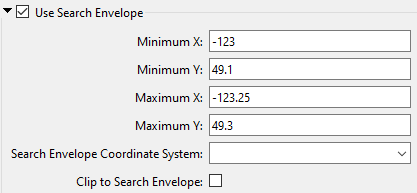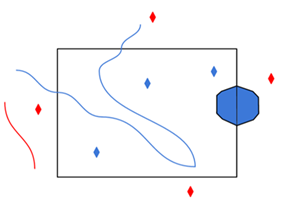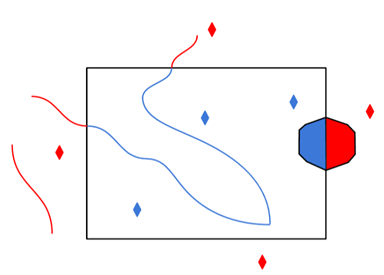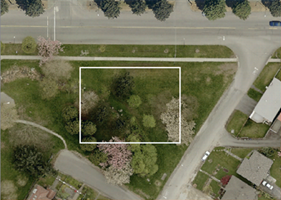Use this parameter to select Dataset Schema mode or Fixed Schema mode.
- Dataset Schema – For every model feature in the .12dxml file, a new feature type is created and takes after the name of the model. Children elements in the model such as string_super, full_tin, and tin are grouped together by their parent model feature. Attributes read are also based on exactly what is in the dataset. By default, obtain feature types and attributes from is set to dataset schema.
- Fixed Schema – Regardless of the features in the dataset, a feature type for each string_super, full_tin, and tin will be created. All children elements from every model will be sorted into the above feature types. The limitations for this mode is that attributes are fixed. 12d elements may contain nested attributes; however, fixed schema mode will not read beyond the second level of attributes. With the exception of text annotations, attributes related to text or symbol annotations at any level will be read and sorted into a symbol_annotation or annotation.
This parameter controls how the reader will read in the annotation location data.
- Use Insertion Point – The reader will use the annotation’s source coordinates, offset, raise, angle, size to determine where the annotation location is. This is useful when writing to formats that already have alignment properties (for example, AutoCAD).
- Use Insertion Point + Bounding Box Justification – The reader will do the same calculation as above, but in addition it will use the bounding box of the text to offset the annotation location to match the 12D justification. This is useful when writing to formats that do not have native alignment properties.
12D models may contain a super_string_alignment element. This element contains both the horizontal and vertical geometry of an alignment.
By default, the reader only reads the horizontal data from the element. If this option is checked, it will read both horizontal and vertical geometry data using an FMEAggregate geometry.
Schema Attributes
Use this parameter to expose Format Attributes in FME Workbench when you create a workspace:
- In a dynamic scenario, it means these attributes can be passed to the output dataset at runtime.
- In a non-dynamic scenario, this parameter allows you to expose additional attributes on multiple feature types. Click the browse button to view the available format attributes (which are different for each format) for the reader.
Use Search Envelope
|
A search envelope (also known as a bounding box) is a rectangular area that defines a geographic area. In FME, the easiest way to define a search envelope is to use search envelope parameters. Defining a search envelope is the most efficient method of selecting an area of interest because FME will read only the data that is necessary – it does not have to read an entire dataset. Search Envelope parameters apply to both vector and raster datasets and can be particularly efficient if the source format has a spatial index. Most FME readers have parameters to define the search envelope of data that is being read:
The parameters include the x and y coordinates of the bounding box as well as a parameter that defines the coordinate system. How to Define the Bounding Box Using the minimum and maximum x and y parameters, define a bounding box that will be used to filter the input features. Only features that intersect with the bounding box are returned. Note that the bounding box intersection is not a full geometry intersection (based on spatial relationships) that would be returned by a transformer like the SpatialFilter. Note If all four coordinates of the search envelope are left at 0, the search envelope will be disabled even if this option is checked.
|
|||||||
|
Search Envelope Coordinate System |
Specifies the coordinate system of the search envelope if it is different than the coordinate system of the data. The coordinate system associated with the data to be read must always be set if this parameter is set. If this parameter is set, the minimum and maximum points of the search envelope are reprojected from the Search Envelope Coordinate System to the reader’s coordinate system prior to applying the envelope. |
||||||
|
Clip to Search Envelope |
The underlying function for Use Search Envelope is an intersection; however, when Clip to Search Envelope is checked, a clipping operation is also performed.
|
||||||




